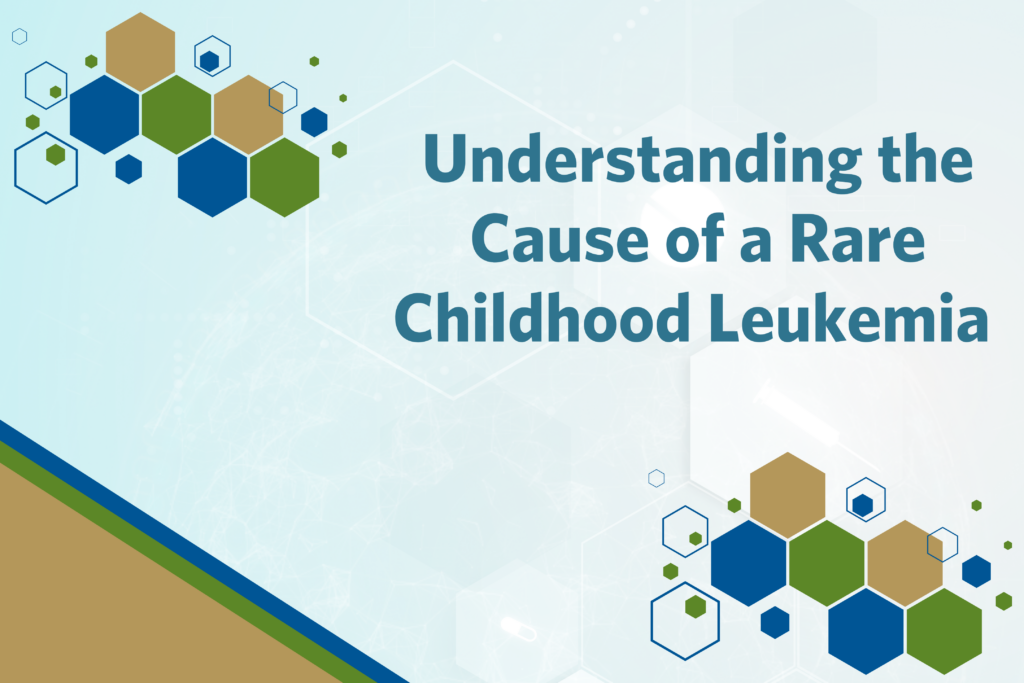
With support from both the St. Baldrick’s Foundation and the American Cancer Society, analysis of data from over 5,000 kids with cancer may provide new opportunities for diagnosis, prognosis, and treatment of pediatric acute myeloid leukemia (AML).
The Challenge
AML in kids is a challenging disease to treat. Currently, the chemotherapies used to kill leukemia cells can affect several of the body’s systems leading to long-lasting side effects, including infertility, heart failure, and the development of secondary cancers. Children with AML need more effective treatment options that recognize and kill only AML cells – leaving the healthy cells alone to grow normally.
Many childhood cancers are caused by a rearrangement of chromosomes (the packaging that holds DNA). With AML, that rearrangement of chromosomes brings together two genes that are normally not found near each other, called oncogenic fusion genes.
Oncogenic fusions may lead to the development of defective proteins that cause cancer to grow and spread. By learning more about oncogenic fusions, scientists may be able to develop new targeted drugs to stop cancer in its tracks.
The Research
Soheil Meshinchi, MD, PhD, is a world-renowned pediatric AML expert who runs one of the only labs in the country developing cures for children with a diagnosis of high-risk AML.
In a recent paper published in Nature Communications, Dr. Meshinchi and his research team analyzed data from more than 5,000 childhood cancer patients to explore how oncogenic fusions contributed to their disease. The research was partly funded by a research grant from The American Cancer Society
“In this study, we extracted information from a large database to better understand the etiology—the specific factors that shape the formation of—oncogenic fusions. We found that some specific causes of oncogenic fusions lead to a higher risk for developing cancer more than other causes do. In the future, researchers and doctors may be able to use this genetic information to determine a diagnosis and prognosis.”
— Soheil Meshinchi, MD, PhD, Fred Hutch Cancer Center, Seattle WA, St. Baldrick’s Foundation and American Cancer Society Grantee
The researchers identified 272 different oncogenic fusions that appear to have a role in pediatric AML. Then, using tools in the lab they identified the factors that led to the formation of these fusions.
But they didn’t stop there. In addition, Dr. Meshinchi and his team demonstrated how CRISPR-Cas9, a gene editing tool, could be used to target cells containing a particular oncogenic fusion and stop their growth — a promising area of research!
Why Does It Matter?
By identifying oncogenic fusions linked to specific cancers, Dr. Meshinchi and his collaborators hope they can eventually develop testing methods to look for oncogenic fusions or other genetic causes driving cancer in children with AML, as well as other types of cancer.
Having knowledge about which oncogenic fusion genes are present in a child’s cancer may help guide the development of targeted drugs that are tailored to each patient.
Learning more about the genetic subtypes in AML could also lead to better prognostic tools, which would help to predict how quickly leukemia might spread from the bloodstream and into other parts of the body (like into the lymph nodes or spinal cord) how likely it is to come back, and how well it will respond to treatment.
Donate now and help support research into better treatments for kids with cancer.
Read more on the St. Baldrick’s blog:

 SBF
Tweets »
SBF
Tweets »